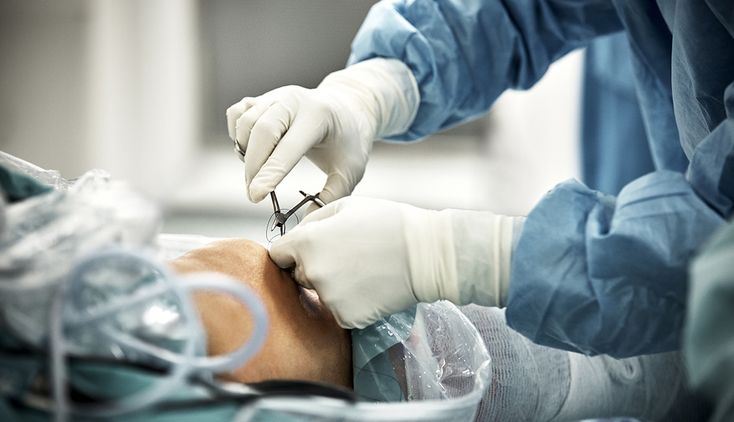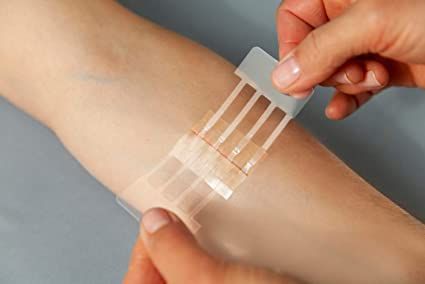Removing stitches from wounds after surgery is an important part of recovery from surgery. Mastering the correct time and care methods for removing stitches can effectively promote wound healing and reduce the risk of complications. The following is a detailed guide to removing stitches from wounds after surgery, covering the time for removing stitches, handling special situations, and daily care points.

1. Regular suture removal schedule
Head, neck, and face: 5-7 days (rich blood circulation, faster healing)
Chest, abdomen, back, buttocks: 7-9 days (larger range of motion, requiring slightly longer time)
Limbs: 7-10 days (muscle contraction creates tension, and healing is slower)
Dorsal area of hands and feet: 10-12 days (frequent joint movement and high tension)
The sole of the foot: half a month or longer (bearing weight pressure, long healing time)
Tension sutures: 14-16 days (such as cesarean section incisions, which require additional reinforcement)
Special cases :
For patients with anemia, malnutrition, old age, multiple illnesses, or very long incisions, stitch removal can be delayed or interrupted.
Infected wounds require proactive care, usually by removing all sutures and performing debridement.
2. Handling of special situations
If the wound is infected
If the time for stitches removal has not come yet, and the wound is red, swollen, painful, with pus or stitches rejection, you need to see a doctor immediately. The doctor will remove the stitches, clean the wound, perform a second stitch if necessary, and prescribe antibiotics to control the infection.
The stitches are
3. Key points for care after suture removal
Waterproof treatment:
Avoid getting the wound wet within 24 hours after stitches are removed. Then rinse gently with clean water and avoid rubbing it hard.
Avoid strenuous exercise
Avoid strenuous exercise such as running, weightlifting, or excessive stretching within 3-6 months after stitches are removed to prevent the wound from splitting.
Prevent scratching
The wound may become itchy in the later stages of healing. Do not scratch it to avoid infection or scar formation.
Sun protection and scar removal
Exposed areas (such as the face) should be protected from the sun, as ultraviolet rays may deepen the pigmentation of scars.
After healing (about 1 week after stitches are removed), you can use silicone gel or patches as prescribed by your doctor to help reduce scars.
Improve nutrition
and consume more foods rich in protein (such as eggs and fish) and vitamin C (such as oranges and tomatoes) to promote wound healing.
Avoid spicy stimulation
and reduce the intake of spicy food to avoid irritating the wound and affecting healing.
4. Use of wound tension-reducing dressings
For areas with greater tension (such as near joints), wound tension-reducing dressings can be used to assist fixation. This type of dressing can disperse wound tension and reduce the risk of dehiscence. Things to note when using:
The dressing should cover the wound and the surrounding 2-3 cm of skin.
The "cross" fixation method can be used at the movable joints to enhance stability.
Change the dressing regularly as recommended by your doctor to avoid skin irritation.

5. Notes
Regular observation: Check the wound every day after stitches are removed to observe whether there is redness, swelling, exudation, or abnormal pain.
Follow doctor's advice: The time for suture removal and care methods must be strictly followed by the doctor, and do not handle it on your own.
Psychological adjustment: Wounds take time to heal, so be patient and avoid excessive anxiety.
Postoperative wound suture removal and care are key links in surgical recovery. By mastering the correct time for suture removal, handling special situations, and paying attention to daily care, wound healing can be effectively promoted and scar formation can be reduced. If you have any questions or discomfort, consult a doctor in time to ensure smooth wound recovery. For more information on Innomed®Wound Skin Closure, refer to the Previous Articles. If you have customized needs, you are welcome to contact us; You Wholeheartedly. At longterm medical, we transform this data by Innovating and Developing Products that Make Life easier for those who need loving care.
Editor: kiki Jia

 English
English عربى
عربى Español
Español русский
русский 中文简体
中文简体








